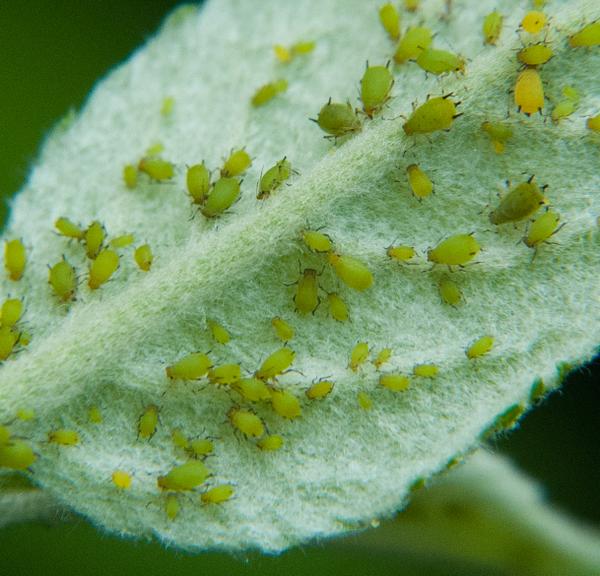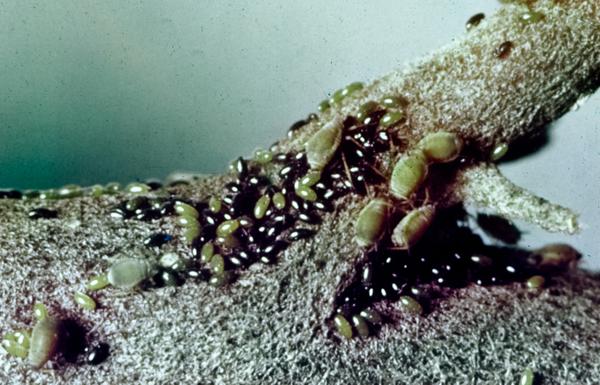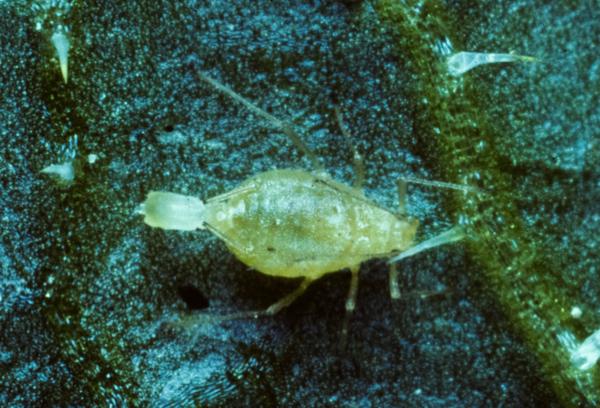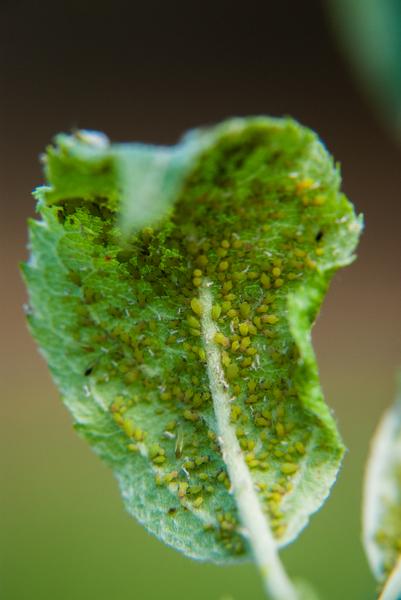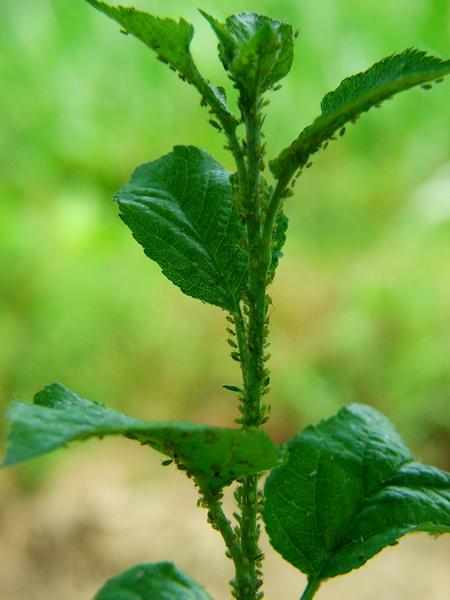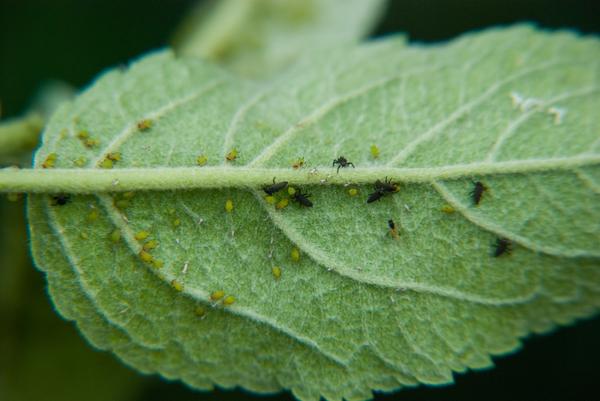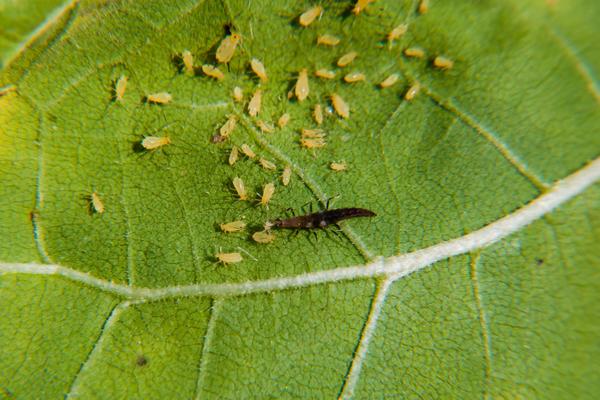Background and Description
Green apple aphid (Aphis pomi; GAA) and spirea aphid (Aphis spiraecola; SPA) are both widely distributed species that look and behave similarly, and management for both species is the same. GAA and SPA infest young trees, water sprouts, and vigorous terminals on apple, pear, quince, and hawthorn in the spring and early summer. Unlike rosy apple aphids, which spend part of their life cycle on plantain, GAA and SPA remain on apple year-round. Wingless aphids have green bodies, pale brown heads, and are about 1/12 inch (2mm) long. Wings, when present, are transparent, and eggs are glossy black.
Life history
GAA and SPA overwinter as eggs on the rough areas (leaf and pruning scars, terminals, and spurs) of the bark of the previous season's growth. Around silver tip, eggs begin to hatch with early spring nymphs, which are all females and are called "stem mothers." As stem mothers mature, they feed on new buds and leaves before giving birth to live nymphs. This occurs without mating as part of a process called parthenogenesis. The new nymphs feed, mature, and produce another generation of live nymphs. Eventually, winged aphids ("alates") appear, and for the duration of the summer the population consists of both winged and wingless parthenogenetic females producing live nymphs. Finally the winged aphids disperse to different apple trees or other host plants and produce nymphs that develop into true sexual forms. After mating with males, females lay overwintering eggs that hatch the following spring.
Damage
Aphids suck sap out of leaves, particularly near the newest part of the tips. Developing foliage may become curled and discolored by heavy feeding, and younger or weaker trees may experience a reduction in growth. A more extensive problem results when honeydew collects below leaves with high aphid populations, leading to a sooty-mold fungal infection that can cause discolored, low-quality fruit. Aphids may also feed directly on immature apples, which causes stunted growth and deformation, and on mature apples, which causes russeting.
Monitoring and Control
GAA and SPA are very common in North Carolina. High GAA/SPA populations do not usually affect fruit quality or yield on mature trees, but stricter control may be necessary on young trees. To prevent populations from reaching damaging levels, sample 10 new shoots (water sprouts) from each of 10 sample trees beginning at the first cover spray and continuing through the middle of July. When at least half the terminals are found to be infested with one or more wingless aphids, implement control measures. Lady beetles, syrphid flies, and lacewing larvae ("aphid lions") are all important beneficial insects that help keep aphid populations below damaging levels.
See the "Pest and Orchard Management Program" section of the Integrated Orchard Management Guide for Commercial Apples in the Southeast for the most current control guidelines.
Publication date: Feb. 23, 2015
N.C. Cooperative Extension prohibits discrimination and harassment regardless of age, color, disability, family and marital status, gender identity, national origin, political beliefs, race, religion, sex (including pregnancy), sexual orientation and veteran status.

